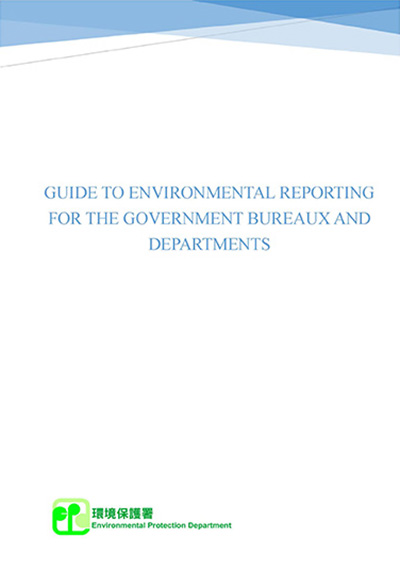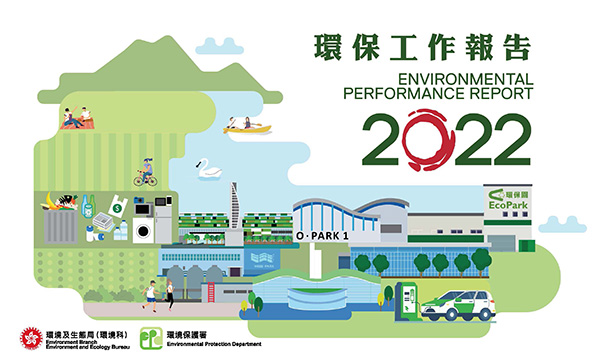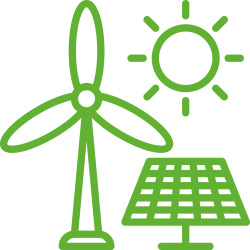Government Carbon Management
Government Carbon Management
In order to achieve deep decarbonisation and the goal of carbon neutrality, in addition to formulating territory-wide policies, the Government has adopted a "whole-government" approach in managing the operation of government departments and has taken forward various measures in our bid to achieve decarbonisation.

For instance, the Government has promulgated internal circulars and guidelines to require departments to perform well in the area of environmental protection in their daily operations. Specifically, these circulars cover measures to conserve energy, to promote the adoption of renewable energy (RE), waste reduction and recycling, installation of electric vehicle charging facilities, as well as water conservation and recycling, etc. with a view to reducing carbon emissions. These circulars, including the “Carbon Management in Government Buildings” circular, also cover environmental targets for government buildings, good practices in carbon management, preparation of environmental reports, as well as green procurement, etc.

Guide to Environmental Reporting for the Government Bureaux and Department
Carbon Audit
Carbon audit provides a systematic and scientific approach to account for and report on the greenhouse gas (GHG) emissions arising from premises such as buildings, and identify areas of improvement with a view to reducing or offsetting GHG emissions arising from their operation. To assist government bureaux and departments (B&Ds) in setting emission reduction targets and implementing emission reduction measures in a more scientific way, the Government promulgated in 2017 the "Carbon Management in Government Buildings" circular which requires all major government buildings to undergo regular carbon audits, the results of which have been disclosed to the public through the publication of annual environmental performance reports or other means.

Environmental Performance Report 2022 of Environment and Ecology Bureau (Environment Branch) and Environmental Protection Department
A “Guide to Environmental Reporting for the Government Bureaux and Departments” has also been published by the Environmental Protection Department to provide technical guidelines to B&Ds in preparation of annual environmental performance reports. According to the Guide, annual environmental reports should cover carbon audit results of major government buildings, environmental impact and improvement targets of their operation, as well as green procurement, etc.
Owing to the differences in nature and operating conditions of various B&Ds, it would be difficult to formulate a one-size-fits-all decarbonisation solution that is applicable to all departments. The Government has recently conducted a round of carbon audits (for the period from 2020/21 to 2022/23) on some 250 government buildings to systematically collect and compile the activity data of the relevant emission sources, with a view to identifying more carbon reduction opportunities. The Office of Climate Change and Carbon Neutrality will work with relevant departments and assist B&Ds in formulating suitable decarbonisation strategies having regard to the outcome of the carbon audit and the operating environment of each department.
Energy Usage and Carbon Footprint
The overall energy usage of the Government (including electricity, towngas, liquefied petroleum gas, RE, etc.) were 3.015 billion kWh and 3.009 billion kWh in 2020/21 and 2021/22 respectively, using the comparable operating conditions in 2018/19 as the base year; with the RE herein being 109 million kWh and 120 million kWh respectively.
The GHG emissions from the above overall energy usage of the Government in 2020/21 and 2021/22 were approximately 1 470 kT and 1 461 kT CO2-e respectively.
Targets
The 2022 Policy Address states that the Government would strive to improve the overall energy performance of government buildings and infrastructure by more than six per cent by 2024/25, measured from the base year of 2019/20. Apart from energy saving, the energy performance of RE projects will also be taken into account. This is to explore new energy sources while reducing energy consumption.
The Government had already achieved a saving of about 7.8 per cent electricity in government buildings from 2015/16 to 2019/20. Since B&Ds had already implemented various energy saving measures, further enhancing energy performance would become more challenging.
Nonetheless, based on the data compiled preliminarily, the Government's overall energy performance had improved by about 3.2 per cent up to 2021/22. We are therefore confident that the target of more than six per cent can be achieved within five years (i.e. by 2024/25).
Examples of Carbon Reduction Measures in Government Departments

Drainage Services Department - Renewable Energy Generating Systems

Environmental Protection Department - Sludge Treatment Facility(T·PARK)

Environmental Protection Department - Organic Resources Recovery Centre Phase 1 (O·PARK1)

Hong Kong Housing Authority – Energy Conservation Installations

Water Supplies Department - Floating Solar Power System


